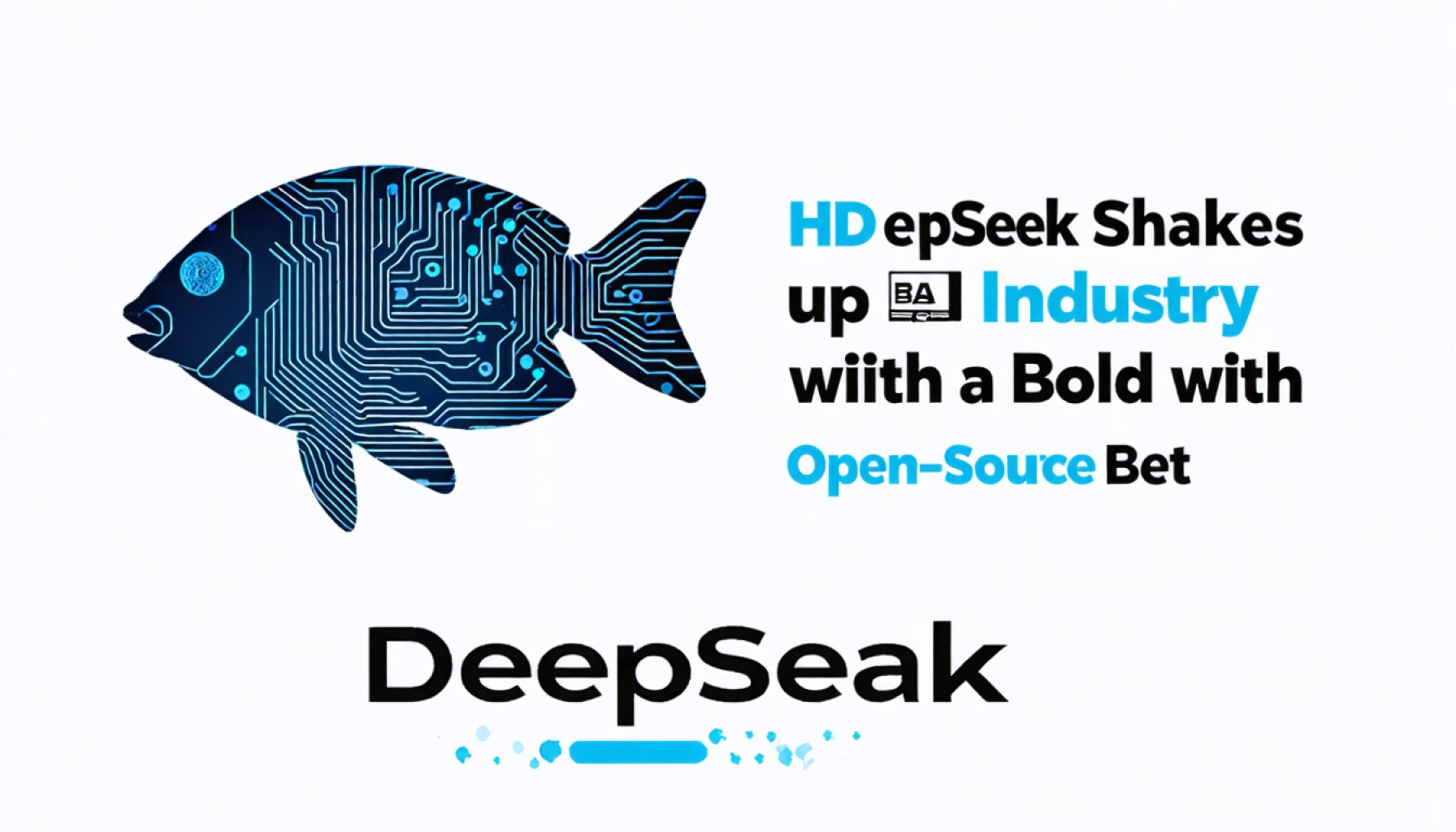
- DeepSeek, a Chinese startup, disrupts the AI sector by open-sourcing its AI code, challenging industry norms.
- The decision to release five code repositories promotes transparency and positions DeepSeek as a pioneer of community-driven innovation.
- This move mirrors the spirit of tech garage inventors, prioritizing shared progress over commercial gain.
- DeepSeek aims to drive collective technological evolution, encouraging other companies to adopt open-source philosophies.
- The company’s initiative transforms software into open pathways for innovation and collaboration within the developer community.
- In parallel, Bloom Energy advances sustainable power solutions for AI infrastructure, highlighting progress in supportive technologies.
- A broader shift is underway toward openness versus proprietary systems, setting new precedents in tech development.
A seismic shift is rippling through the AI sector, fueled by the audacious moves of the Chinese startup, DeepSeek. Viewed as a disruptor amidst tech giants, DeepSeek has committed to open-sourcing its AI code, a fundamentally revolutionary act that could redefine industry norms.
In an era where proprietary technology often rules, DeepSeek steps off the beaten path. It recently announced plans to release five code repositories, promising transparency and collaboration. This move positions the company as a pioneer of community-driven innovation, challenging others to embrace a similar ethos.
DeepSeek’s approach is reminiscent of the original tech garage inventors: gritty, communal, and driven by a passion for shared progress rather than sheer commercial gain. Although this fearless strategy might seem counter-intuitive in a world where closed systems often equate to competitive advantage, it underscores a fresh perspective. Open-sourcing isn’t merely a strategy; it’s a philosophy, a communal rallying cry to accelerate technological evolution collectively.
As lines of code emerge from DeepSeek’s repository, they transcend simple software. They’re potential pathways for new breakthroughs, empowering the entire developer community to innovate, modify, and contribute. Where larger firms might raise walls, DeepSeek builds bridges, inviting collaboration and infusing the AI terrain with vitality and open dialogue.
Meanwhile, established players like Bloom Energy demonstrate advancements in other AI-supportive technologies. Their expansion of solid-oxide fuel cells across Equinix data centers marks significant progress in sustainable power solutions for burgeoning AI infrastructure.
Together, these developments herald an exciting future. The battle lines are drawn not between companies but between philosophies: closed versus open, reinforced by a belief in shared momentum. The path forward isn’t just about innovation; it’s about setting a precedent of openness that reshapes how we think about technology and progress.
How DeepSeek’s Open-Source Strategy is Revolutionizing AI Development
How-To Steps & Life Hacks
1. Utilizing Open-Source AI Code:
– Access the Repositories: Start by visiting the platforms where DeepSeek hosts its open-source code, like GitHub. Download the libraries or tools you need for your project.
– Community Engagement: Participate in forums or collaborative platforms to discuss code applications and improvements.
– Integration: Incorporate relevant code snippets into your AI models, customizing them to fit your specific use case.
2. Life Hack for Developers:
– Stay engaged with online communities and newsletters related to your interest in AI. This keeps you updated with the latest contributions and modifications to open-source projects, such as those from DeepSeek.
Real-World Use Cases
– Small Business Application: A startup can leverage DeepSeek’s open-source algorithms to develop customized AI tools without incurring high licensing costs.
– Educational Integrations: Universities can adapt and implement the AI models to support dynamic learning platforms or research projects, broadening students’ exposure to cutting-edge technology.
– Industrial Innovation: Manufacturers could integrate AI from open-source models to streamline processes, optimize resource usage, and enhance automation strategies.
Market Forecasts & Industry Trends
– Shift Toward Open-Source: According to a report by OpenAI, the AI open-source market is expected to grow annually as businesses and developers seek collaborative and cost-effective solutions.
– Increased AI Adoption: Industry trends indicate a 30% rise in AI deployment across sectors, from healthcare to finance, where open-source availability spurs innovation.
Reviews & Comparisons
– DeepSeek vs. Proprietary Giants: While proprietary AI solutions from companies like Google and IBM offer robust platforms and customer support, DeepSeek’s open-source approach removes barriers to accessibility, fostering innovation without binding costs.
Controversies & Limitations
– Intellectual Property Concerns: Critics argue that the open-source model might enable unchecked replication or misuse of the technology, potentially leading to security breaches or ethical concerns.
– Resource Intensity: Establishing open-source projects can be resource-intensive, requiring ongoing contributions and community support to flourish.
Features, Specs & Pricing
– Open-Source Advantages: DeepSeek’s repositories are freely available, lowering the cost of entry for many innovators and reducing reliance on industry gatekeepers.
– Specifications: The repositories include various machine learning models, capable of handling tasks from basic data processing to complex neural networks.
Security & Sustainability
– Secure Collaboration: Increased transparency through open-source can lead to faster identification and rectification of vulnerabilities.
– Sustainability Efforts: With collaborations like those with Bloom Energy, even AI-supportive infrastructures are moving towards greener solutions, emphasizing a sustainable future.
Insights & Predictions
– Growth in Developer Community: As collaboration becomes more prevalent in AI development, expect a diversified pool of contributors driving forward technology with unbounded creativity.
– Open-Source Standardization: Over time, it’s likely that open-source norms will shape industry standards, challenging companies to balance proprietary advantages with communal contributions.
Tutorials & Compatibility
– Tutorial Offerings: Expect an increase in tutorials teaching integration of open-source AI into various platforms, enhancing compatibility with existing systems across industries.
Pros & Cons Overview
– Pros:
– Democratizes access to advanced AI technology.
– Encourages rapid innovation and adaptation.
– Reduces development costs significantly.
– Cons:
– Potential for security vulnerabilities if not managed correctly.
– Lacks the commercial support and documentation that proprietary solutions offer.
Conclusion
For entrepreneurs, educators, and developers, adopting an open-source AI strategy can drastically reduce costs while fostering innovation. Staying active in developer communities and contributing to ongoing projects can enhance both knowledge and competitive positioning in this rapidly evolving field. Whether for learning or building, embracing this open ethos is both a strategic and philosophical choice with wide-reaching benefits.
For further exploration and resources on AI advancements, visit OpenAI and GitHub.



